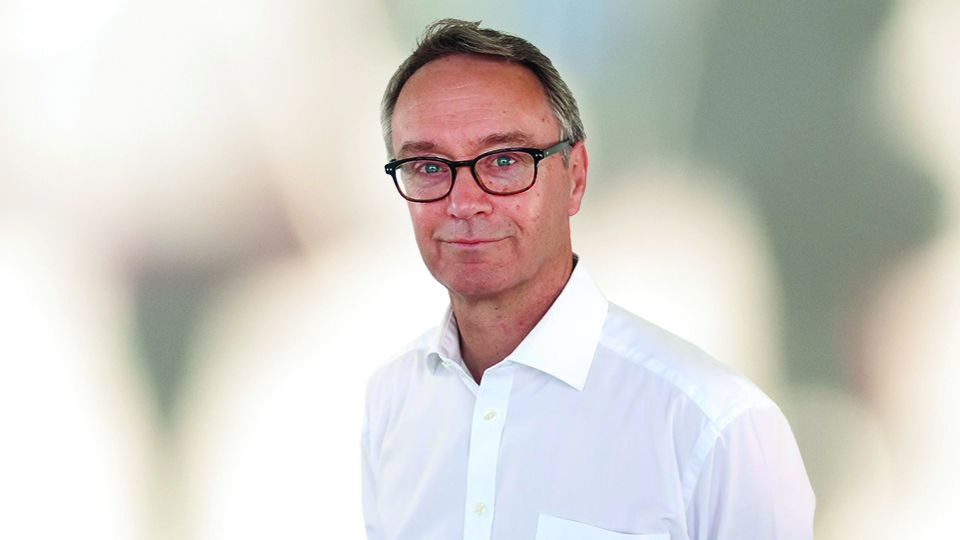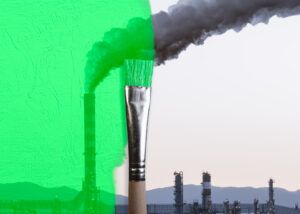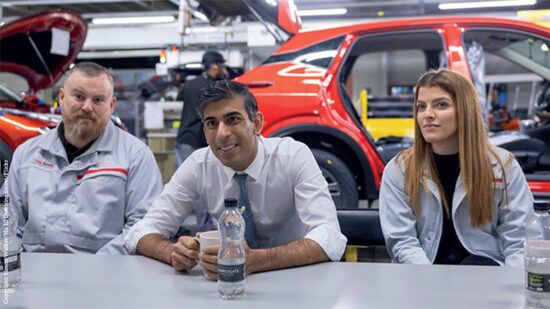Most would agree the investment industry has a vital role to play in helping the world achieve net zero and in addressing a multitude of other issues both environmental and social. But although this will require radical thinking and exploring every option, there are still areas considered taboo, namely steel, nuclear power and concrete.
Steel and concrete production are taboo because they are often seen as bad actors due to their huge carbon footprints, and any fund/investor seeking a low-carbon footprint (which may not be the right answer anyway) will explicitly avoid them.
But the reality of the situation is our world is built out of steel and concrete whether we like it or not, and both are incredible materials we can’t live without. You can’t put up buildings, construct railways, make electric vehicles or even build a wind farm without them, the turbines need steel and bases need concrete.
Steel
Steel production generates a large amount of CO2 annually and is estimated to be responsible for up to 5% of global CO2 emissions. It’s a very energy intensive process in which iron ore is mined, crushed, smelted in coal fired furnaces and turned into pellets.
These pellets are heated with coke (carbon) in the reduction process to remove oxygen but this stage releases CO2 in the reaction. It’s not difficult to see how parts of the process (end to end) can be electrified powered by renewables, vehicles, conveyors, lifts etc but the big challenge is the blast furnace and reduction process that needs to reach 1,000 degree centigrade and coal has always been the fuel of choice.
To turn steel making into a process that doesn’t release CO2 coal needs to be replaced with a renewable energy source such as bio-oil or hydrogen, which can produce high enough temperatures – and by using hydrogen in the reduction process instead of coke to remove the oxygen from iron ore the by-product is water not CO2.
In Sweden there is a pilot steel making facility producing ‘CO2 free’ steel, and which is expected to produce a 1m tonnes per year by 2026. A key to this process is for the hydrogen to be produced using renewable energy, of which there is an abundance in Sweden – interestingly 40% of their power comes from nuclear. Not surprisingly this process is more expensive than the conventional way of producing steel, but as is always the case with new technologies those that are proven will in time come down in cost.
Nuclear
With nuclear, we live in fear of radiation contamination and nuclear disaster causing catastrophic damage.
Our fears are based on disasters at Three Mile Island (1979), Chernobyl (1986) and Fukushima (2011), and of course there is the long-term problem of where to store the waste. Interestingly the number of actual casualties from these disasters is very low; subsequent research has shown that no discernible radiation leaked from Three Mile Island, and research at Fukushima indicates any radiation contamination has been very contained; Chernobyl however was the big one, which has no doubt been a major contributor to our fears – Chernobyl failed due to poor technology and lax safety procedures. It was still the Cold War period and the world was in a different place.
Although nuclear can present a risk, is our fear significantly greater than is justified? Nuclear technology has moved on a long way from the days of Chernobyl.
In fact, a reactor is being built in Canada that may start to change the public perception of the industry. In some ways it’s not that different from a conventional modern reactor bar one thing. Reactors work by splitting the nucleus of uranium 235 atoms, which in turn split other nuclei releasing energy that is used to ‘superheat’ water to 300 degrees centigrade. This water is under tremendous pressure, so a risk is the escape of radiation should the super-heated water pipes rupture. The new reactor in Canada is not using water, instead it uses a salt solution, and the benefit is that this solution solidifies incredibly quickly if it escapes and confines the leak to a very small area.
This development is hugely exciting because renewables can only solve our energy requirements up to a point; being dependent on sunshine and the wind, which we don’t control means periods when energy shortfalls occur, as witnessed recently in the UK when wind speeds were too low for turbine to operate effectively. We need to have a fuel that generates energy that is a back up to renewables – presently this gap is filled by natural gas, but this comes with a large CO2 footprint, albeit smaller than coal. Whereas nuclear comes with a very small footprint. And although battery storage technology has a role to play in the electrification of the global energy supply, batteries are not going to be able to provide the back-up on the scale we require, we need another source. New nuclear technology could address this issue.
Concrete
Concrete/cement production is not the friend of the environmentalist either, it also is very CO2 intensive requiring huge amounts of energy from quarrying, crushing, transporting and in the production of the aggregate and products.
But a company has found a way of combining CO2 with industrial residues to capture CO2 and produce valuable low carbon products. This use of waste material is particularly suitable for recycling concrete – the process makes pellets by mineralising CO2 and these pellets (aggregate) can be used, for example, to make concrete blocks.
This system is deployable quickly and can capture the CO2 emissions from stacks (flues) of industrial plants, and then mixed this with waste products (industrial residues) from building projects to create solid aggregate waste. The process of capturing CO2 and mineralising it is what happens in the natural world over very long periods of time, but at much faster rates.
These companies are being inspired and driven by entrepreneurs and scientists and are in early stage development, but if we are going to address the challenges the world faces the investment industry needs to get behind these types of business and provide investment for development – the sooner this happens the sooner we’ll have products and processes that rather than generate CO2 help reduce it.








